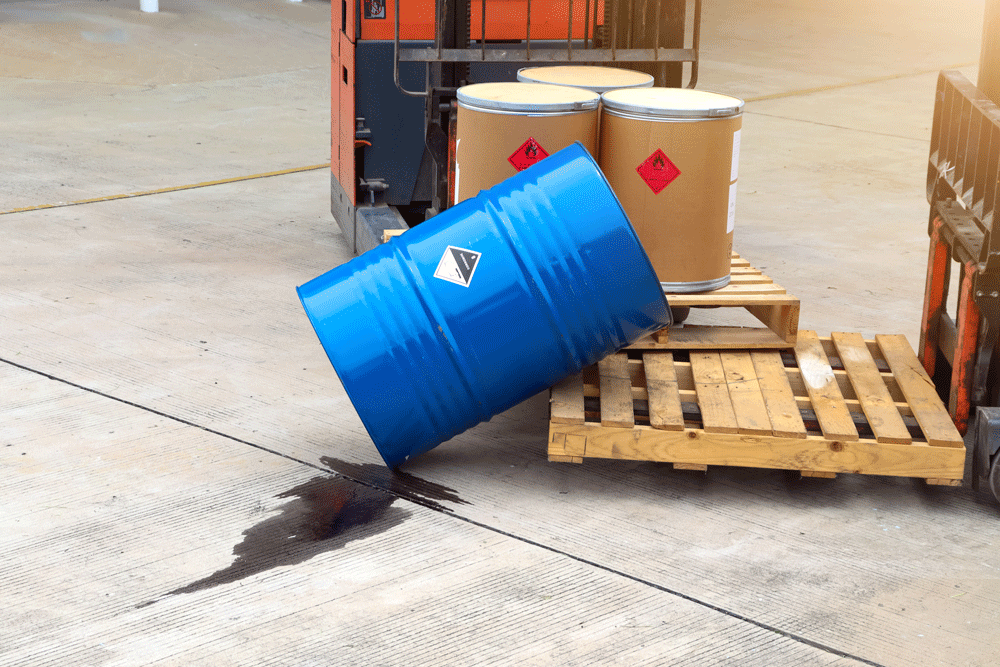How To Carry Out A Chemical Spill Risk Assessment

CONTENTS
- What is a chemical spill risk assessment?
- The different stages of a chemical spill risk assessment
- Contact us today
If your business uses chemicals, creates substances, or carries out processes that might harm people’s health, you are required by law to control risks to employees. That means, amongst other things, that you need to conduct risk assessments to comply with regulations.
But carrying them out regularly also ensures you know how best to respond to an emergency, like a chemical spill.
At ICE Cleaning, our chemical spill cleaners can be on site within an hour in emergencies, wherever you are in the UK. They are fully permitted to dispose of chemicals and bio-hazardous waste, and can quickly restore your workplace to a safe environment again.
Keep reading to find out what a chemical spill risk assessment is, and how to carry one out.
What is a chemical spill risk assessment?
Also known as a spill risk assessment, it makes sure that businesses that store and handle liquids are prepared to deal with a spill.
It makes you fully aware of the hazards of the chemicals you use, goes through all the different ways a chemical spill could happen, and helps you develop your chemical spill response plan. So, should a spill happen, you can minimise harm to employees and resume operations as soon as possible.
Doing risk assessments thoroughly enables you to immediately respond to a chemical spill when one occurs. This is essential as they can pose a range of dangers:
- Exposure to toxic or poisonous gases can cause serious illness, including cancer, or even be fatal
- Slippery floors can put employees at risk of injury
- If touched, certain chemicals can cause serious burns
- There is a fire risk as some chemicals are flammable
- Buildings can be rendered unusable until the spill has been thoroughly cleaned
- Run-off can cause serious environmental impacts including contaminated water sources, damaged wildlife, and ecological problems
You can find free risk assessment templates on the Health and Safety Executive's website. Now we’ve covered why you need to do them, let’s go through how to conduct one.
The different stages of a chemical spill risk assessment
Identify the chemicals and establish the hazards
First, you need to determine which chemicals are harmful so you can respond in the appropriate way to a spill. Read the product labels and safety data sheets, or contact your supplier to get this information.
Then, evaluate the internal storage, transport, and quantities of the chemicals you use. Pay particular attention to the conditions and suitability of secondary containment systems. This will help you determine different ways the chemicals can be spilled and the likelihood of it happening.
Determine who might be affected
Next, consider who might be affected by a chemical spill and how it could harm them.
Remember: some employees might need special considerations. For example, pregnant women should be prioritised when evacuating a building following a chemical spill to minimise exposure to fumes.
The different ways employees can be harmed needs to be taken into account, too. This can include the inhalation of fumes, physical contact with a spill, and slipping on wet surfaces. Employees should be involved here so they can chip in their personal experience of hazards in the workplace.
You will also need to identify any potential routes for the escape of the liquid from your site.
Evaluate the risks
Once you have identified the risks of a chemical spill, you need to consider how best to prevent them. This could include:
- Considering an alternative, safer substance
- Improving the storage of chemicals, such as keeping them under cover or using secure shelving
- Using chemical spill kits, pallets, and bunds
- Ensuring chemicals are stored at eye level
- Regularly inspecting containers for leaks or deterioration
- Reviewing your current chemical spill response plan, including the products and equipment you use
You can find out more about how to deal with chemical spills here.
Document and implement your findings
Make sure your employees are fully aware of the findings in the risk assessment. They need to know about new precautions and your up-to-date chemical spill response plan.
It is recommended that you regularly review your risk assessments. You should do this once per year, or whenever there are changes in the chemicals, machinery, and equipment you use, or your staff.
No matter how prepared you are for a chemical spill, cleaning up the spill should always be left to the professionals. You need an immediate and effective clean that requires specialist expertise, state-of-the-art equipment, and the right products.
If you attempt it yourself without the necessary gear and training, you could harm yourself or others.
Contact us today
Our technicians are highly experienced in cleaning up chemical spills, from containing the spill to decontaminating the area. They can deliver a high-quality service 24/7, 365 days a year.
Get in touch with our team on 0208 066 0360 or enquiries@icecleaning.co.uk for more information.

Speak with me today,
I’m here to help
By asking you a few questions either via phone or email I can immediately provide a realistic estimation of the cost.
You’re in good company. We’ve cleaned for the following commercial clients… View all

Why choose us?
- Cater to a wide variety of cleaning situations
- Nationwide coverage, available 24/7
- Cater to commercial and domestic clients
- Free survey provided prior to quotation
- Emergency response team
- Offer a bespoke service designed to suit all your needs
- All technicians hold professional health and safety qualifications, including BICSc, IOSH, Dewpoint Professional & Safe Contractor
We’re fully accredited
We place best practise, professional expertise and health and safety at the core of our business. We’re fully compliant with all legal obligations. You can view a list of our accreditations below, or visit our Health & Safety page for more information.











-RGB-small.1707319151.jpg)




















